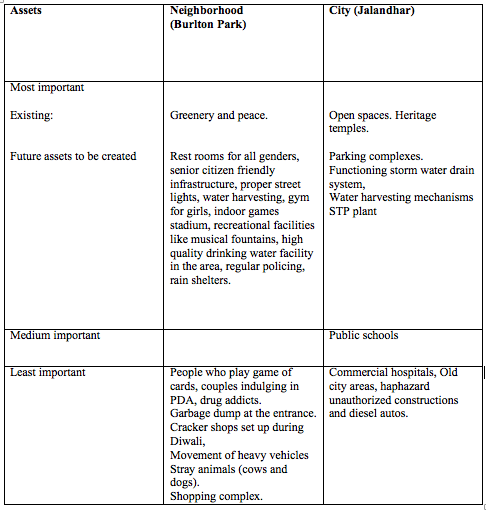Jalandhar Burlton Park Community Asset Mapping Workshop Report
‘This is the place you find peace and solace’….
-A walker at Burlton park
How do the middle classes perceive urban transformations sought by the smart city mission? To understand this all important question the research project team held a community asset mapping workshop at Burlton Park, the vast open green area in Jalandhar on August 12th evening.
The park, located in the North east part of the city, is part of the re-development plan of the ABD area for Jalandhar smart city project and will see a multi-purpose sports hub being developed. The earlier version of the sports hub planned all the way back in 2008 and which was to cover the entire 63 acres was opposed by the park societies as they feared destruction of green cover. They were successful in getting a status quo order from the high court in 2013 against the municipality project. However in March this year, almost three years after Jalandhar was selected for the smart city mission, the municipality re-submitted the proposal again; this time with a reduced built up area of only 8.3 acres and promising to keep the green cover intact. It was eventually cleared by the State Level Environment Impact Assessment Authority[1]. The latest proposal left out the parks which together consist of around 12.32 acres eyeing instead the vast empty space adjoining the cricket ground: traditionally used for satsangs (religious gatherings), diwali cracker shops and local basti boys to play cricket.
The focus of the CAM workshop was to bring in the various community stakeholders who use the park area and understand how they perceive the proposed urban intervention. There are multiple stakeholders in the park ranging from organised to unorganised ones. Some of the stakeholders include, the various sportspersons (hockey, cricket and tennis), walkers associated with the five different societies which manage different patches of green area at the park, the students from nearby colleges, vendors and so on. Around twelve regular users of the park participated in the session. Most of them were retired professionals from the societies who use the park for walking and recreational purposes. We divided the CAM participants into two groups. After explaining our research objectives we dived straight into mapping the assets into three categories: important, less important and least important. First we mapped the assets in Burlton park area where we again sub-divided assets into two categories: existing assets and future assets.
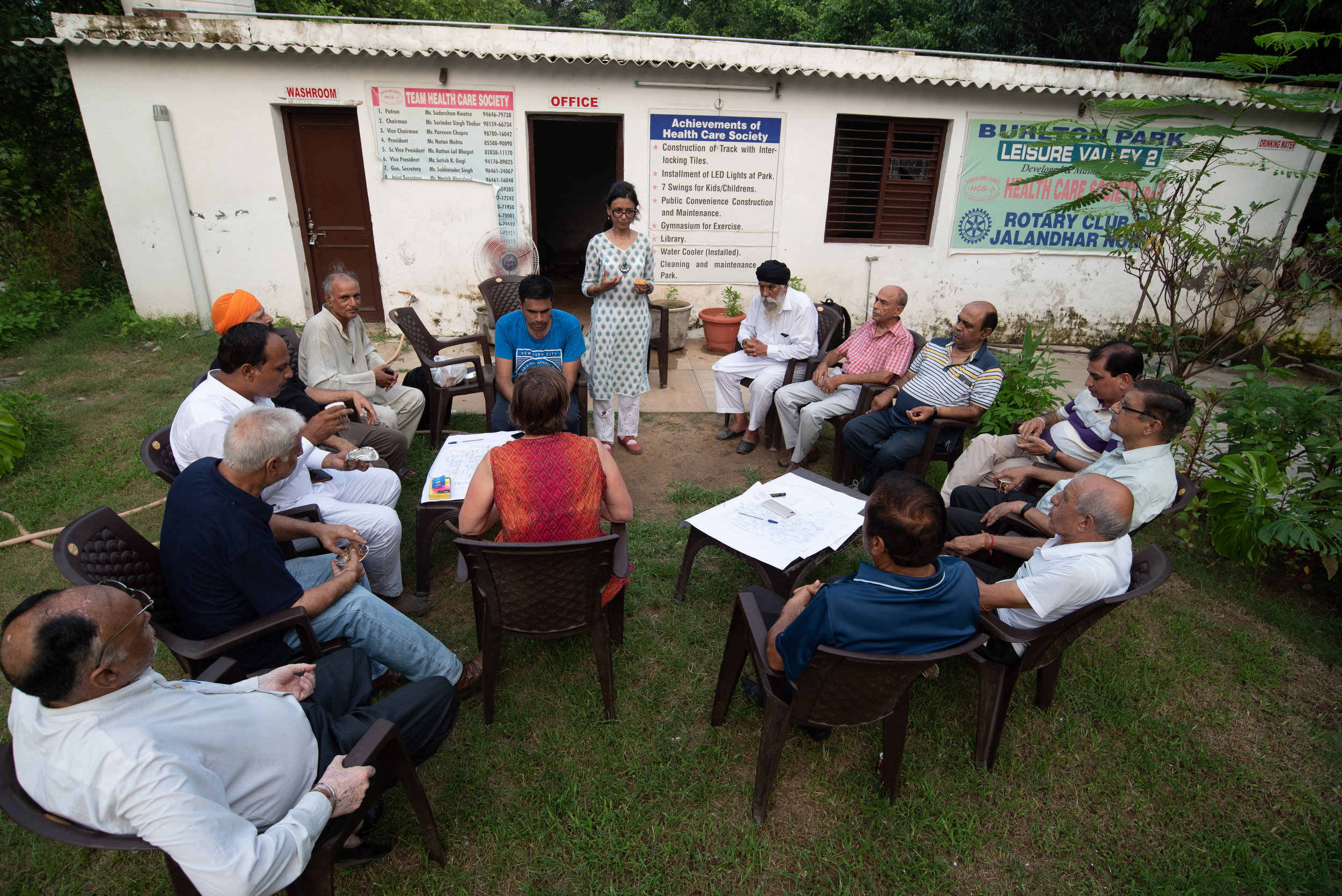
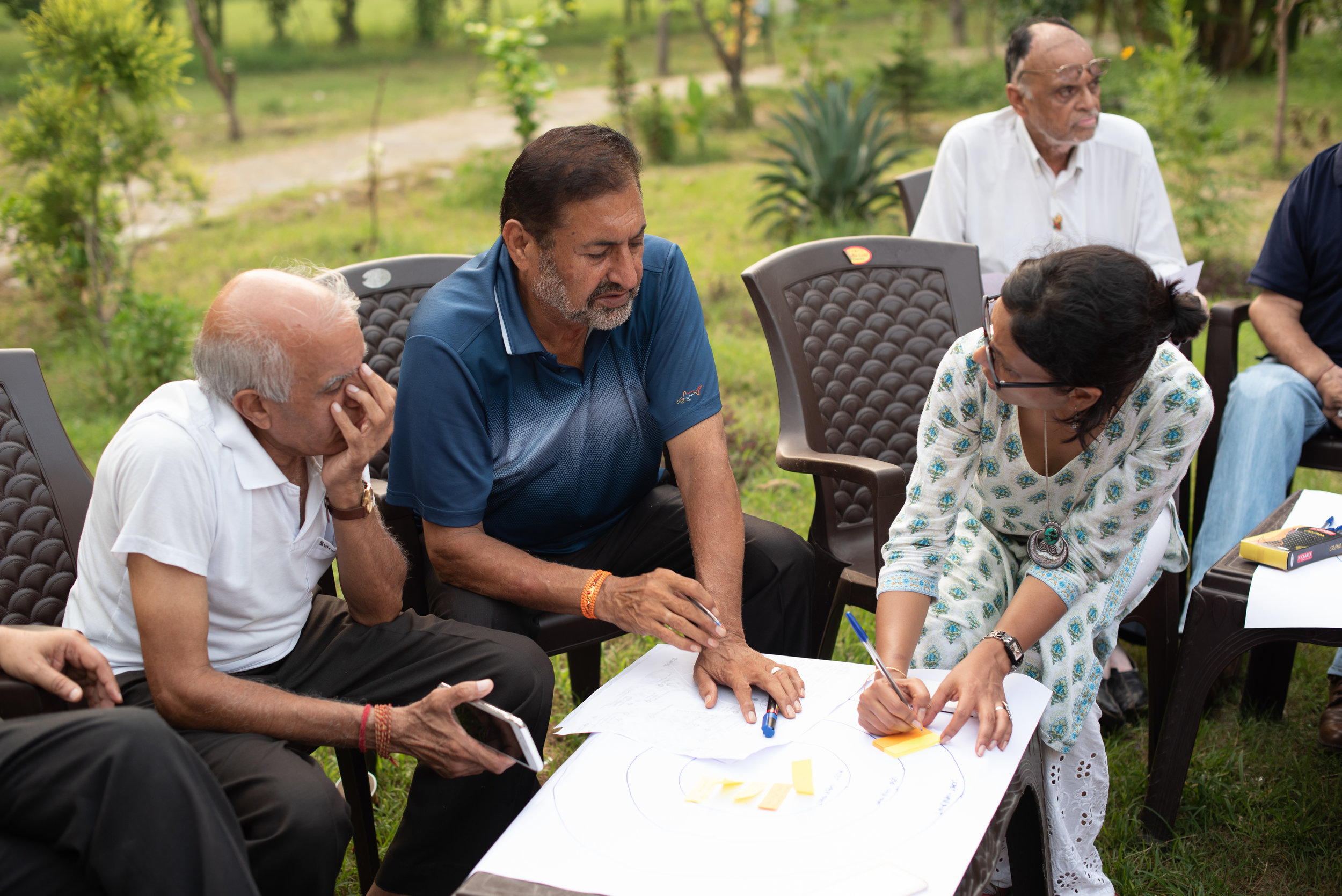
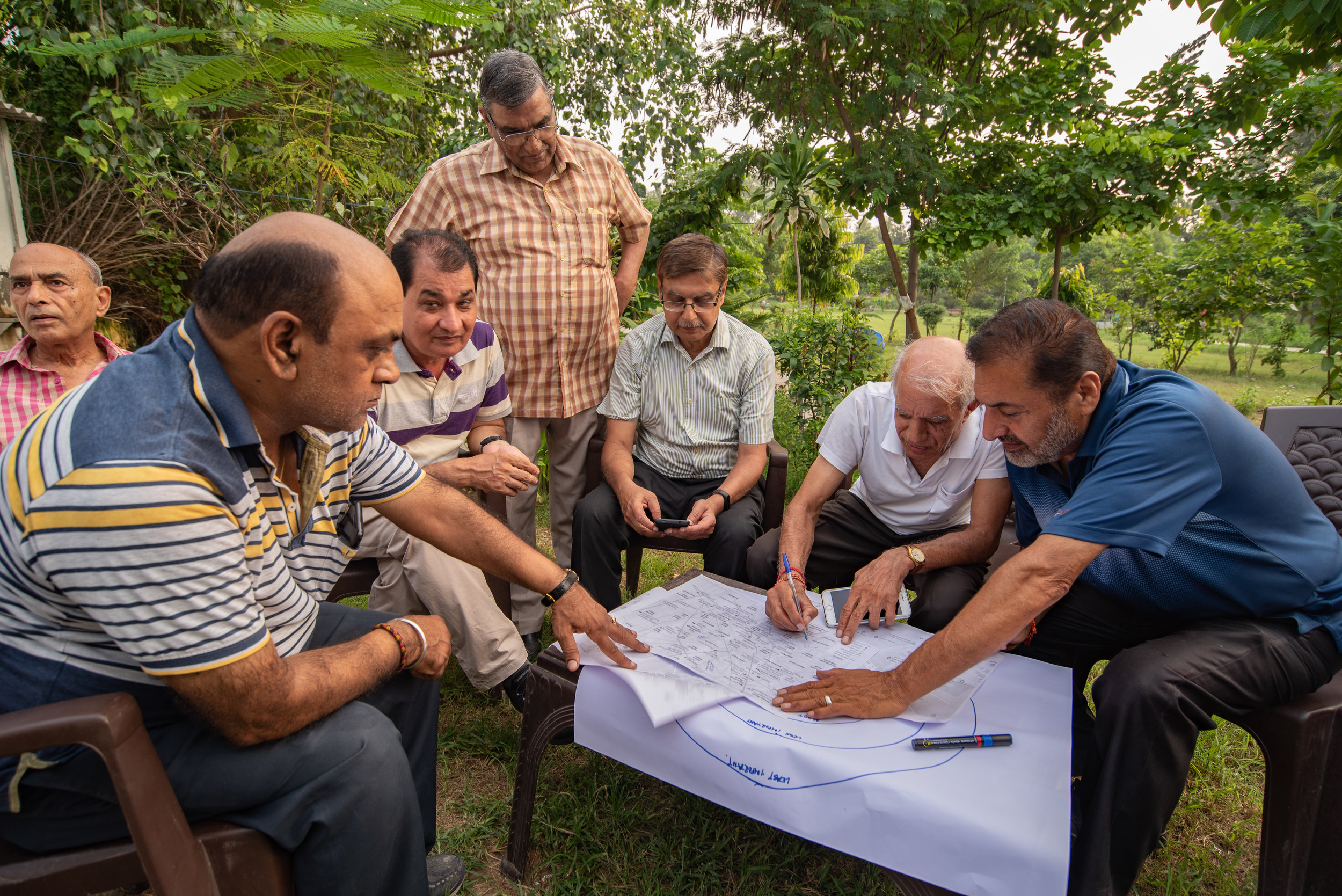
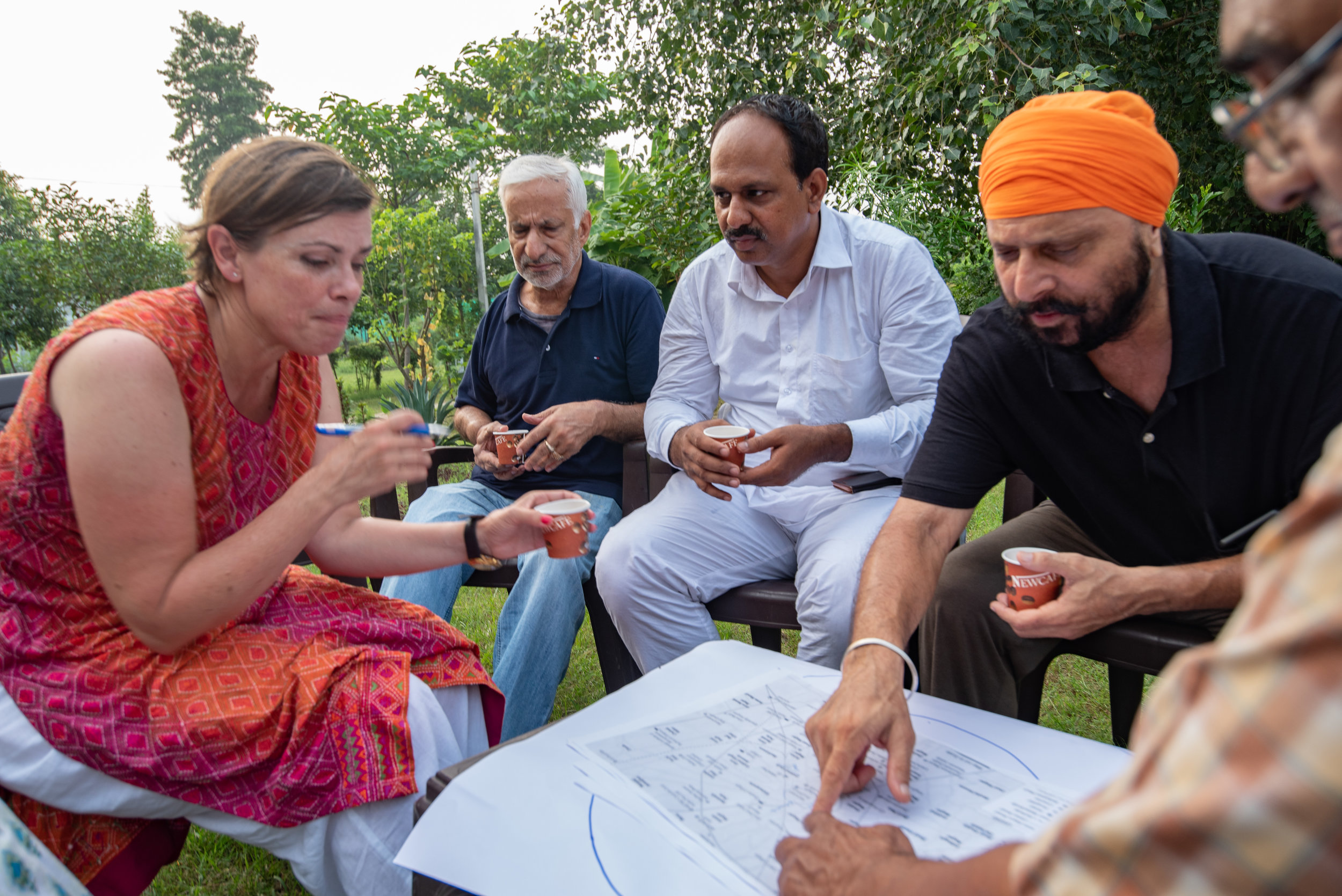
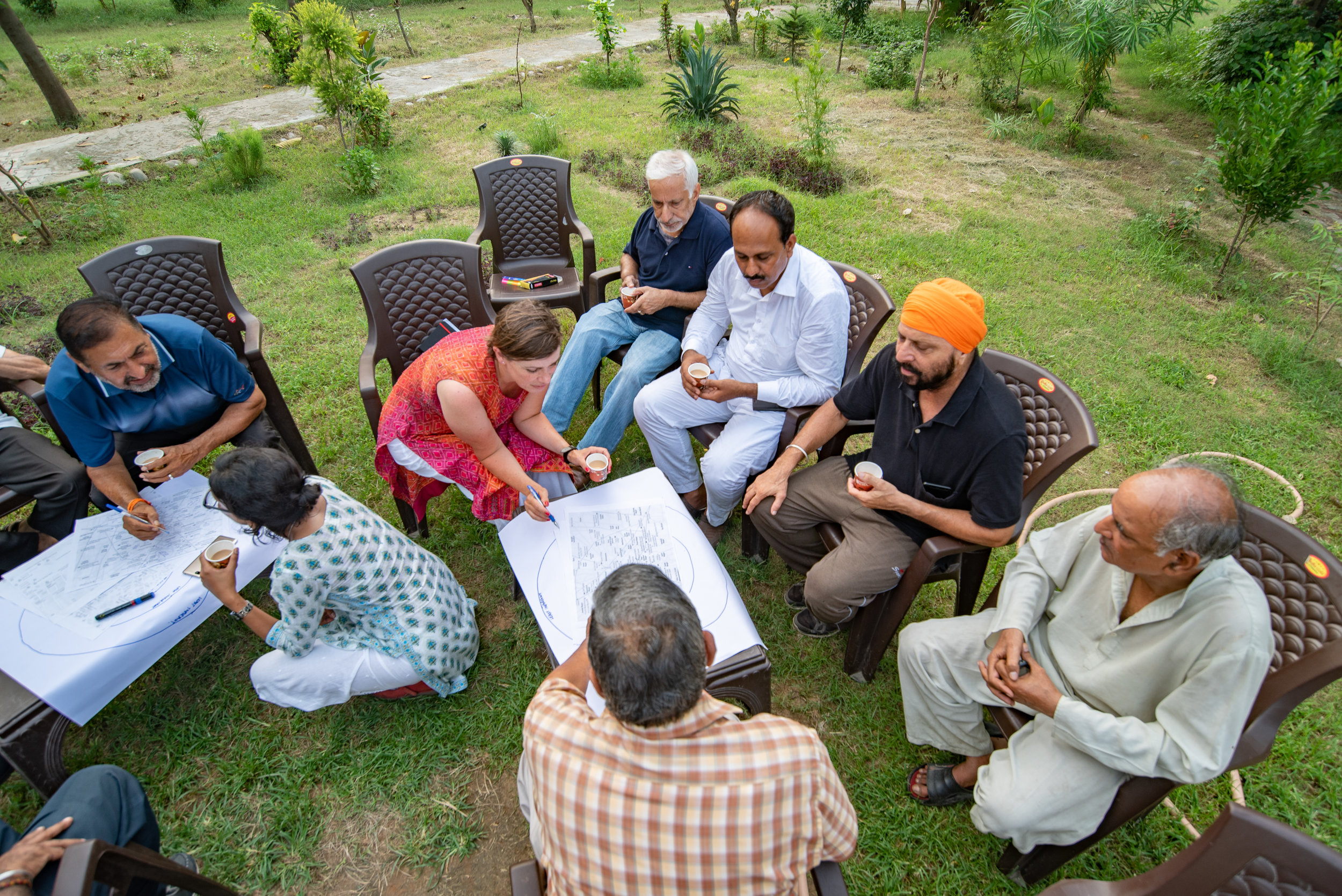
The most important existing asset for both the groups of Burlton Park was the greenery of the area. According to news reports around 4000 odd trees dot the area[2]. One participant remarked that the main assets in the park were: peace and solace.
The least important among existing assets for both the groups in the park were things that they felt spoiled their peace and solace. This included people who come to play game of cards, ‘lovers’, drug addicts, garbage dump, cracker shops set up during Diwali, movement of heavy vehicles stray animals etc. A participant almost in a whispering manner told us, “After 8 30 pm this is the most dangerous place as many anti-social elements come here and do unwanted social activities. General people are afraid to come at night. Quite often there are couples coming here late night. They must be severely punished. So no one else should bear these acts’.
Many participants were more interested in mapping future assets as they felt a lot of development was needed. The most important future assets at Burlton Park included rest rooms for all genders, senior citizen friendly infrastructure, proper street lights, water harvesting, gym for girls, indoor games stadium, recreational facilities like musical fountains, high quality drinking water facility in the area, regular policing, rain shelters and so on. The least important future asset needed in Burlton Park was shopping centers. ‘The commercialisation will create a hazard and encroach upon our greenery’ a walker argued.
Three important observations emerged across the two groups. Firstly, the most important assets at the park were seen as intangible, an important point which administrations and policy makers seem to miss out while taking into account assets affected by urban transformations. They saw this as a vital space for developing friendships and gappe marna (gossip) which contributed to their well-being. Secondly they saw their carefully curated space as being under constant threat from not only the municipality but also due to the ‘loose’ character of Burlton Park, one which seems to fraternise and mingle with all sorts of characters and groups from the city without any discrimination. And finally despite their battles with the state they were very careful not to be seen as anti-development and held out development as a ‘common good for all’. The common refrain was that they were not against development but just wanted the greenery to be preserved. They talked about how they had pooled in the resources and developed community assets like the Jogging track. ‘We are paying Rs 6000 per year for membership and developing the park slowly’ added a participant. Most of them welcomed the sports hub under the smart city mission.
Then we moved the CAM exercise to the city level. Here the most important existing assets were open areas as they acted as earthquake buffer zones. ‘We are in high earthquake zone, number 5, and maintaining open spaces is crucial for the city’ noted a participant. Heritage temples were also seen as important assets to the city. ‘Annapurna temple and Brinda devi mandir is very important to the identity of the city. We have a lot of memories there’ noted a participant. Public schools were put down as medium important assets. A participant rued the commercialisation of education and health which he felt has made services unaffordable to the poorer sections of the society. ‘The commercial hospitals are the commercial butchers. There should be ultra-modern hospitals but they should be run on the basis of humanity’ a participant added. In the least important existing assets the participants added old city areas, haphazard unauthorised constructions and diesel autos. Old buildings in narrow lanes were seen as dangerous due to safety reasons. ‘The government is awaiting judgments from the courts regarding their demolition. They are all stuck till then’ added a participant. ‘The Diesel auto rickshaws are causing pollution and congestion and they should be regulated’ said a participant.
The participants had a robust discussion on the future assets they saw as vital to their city. Parking complexes emerged as an important one for a lot of participants. ‘There are no parking areas in the old city and we really require them’ noted a participant. A functioning storm water drain system, water harvesting and STP plants were also seen as the foremost requirement of a smart city. The least important future asset in the city was hotels.
Two strong themes emerged when we moved the CAM to city level. Firstly most participants agreed that the mindset of our people can act as a hindrance for urban transformations and that more education was required. ‘Here if you open a shop you immediately go ahead and encroach 70 percent of area in front of your shop. This is the mindset of our people’ rued a participant. Secondly most of them were critical of retro-fitting; most participants felt that old areas cannot be developed to make them smart. They all seem to advocate Greenfield projects with Chandigarh remaining a huge inspiration. A participant who had travelled to South East Asian cities remarked, ‘Singapore was also earlier congested in 1960’s and 70’s, but now it is totally transformed… Move the people out like they are doing in China and build new cities.’ The Chinese government’s ability to effect massive urban transformations was grudgingly admired. ‘I have seen China, there the government can do it. Here we can’t do it. Here there will be resistance, we don’t want the change’ concluded a participant.
Various assets mapped by the participants at the CAM workshop at Burlton Park.
PC: Varun Patil

